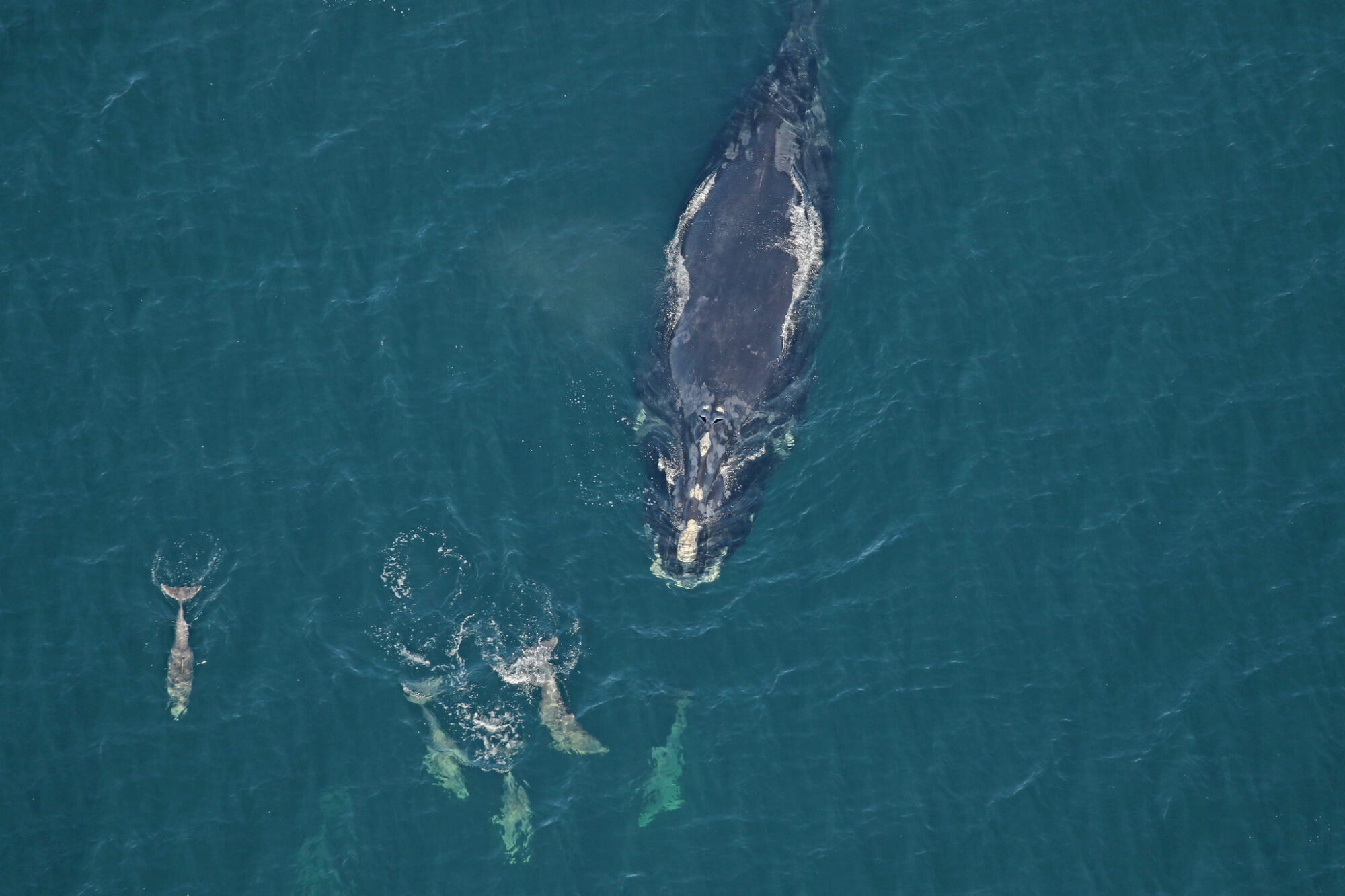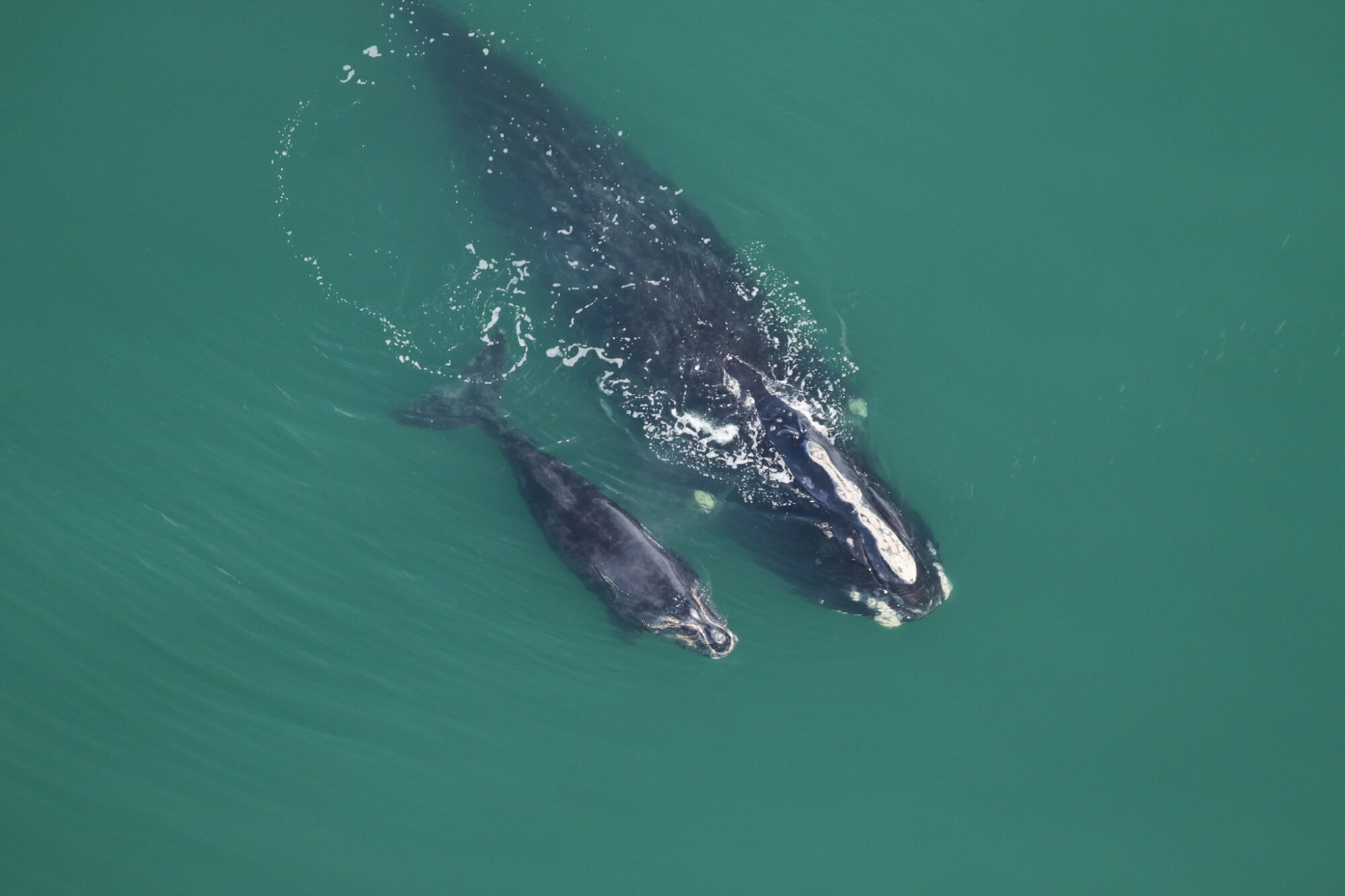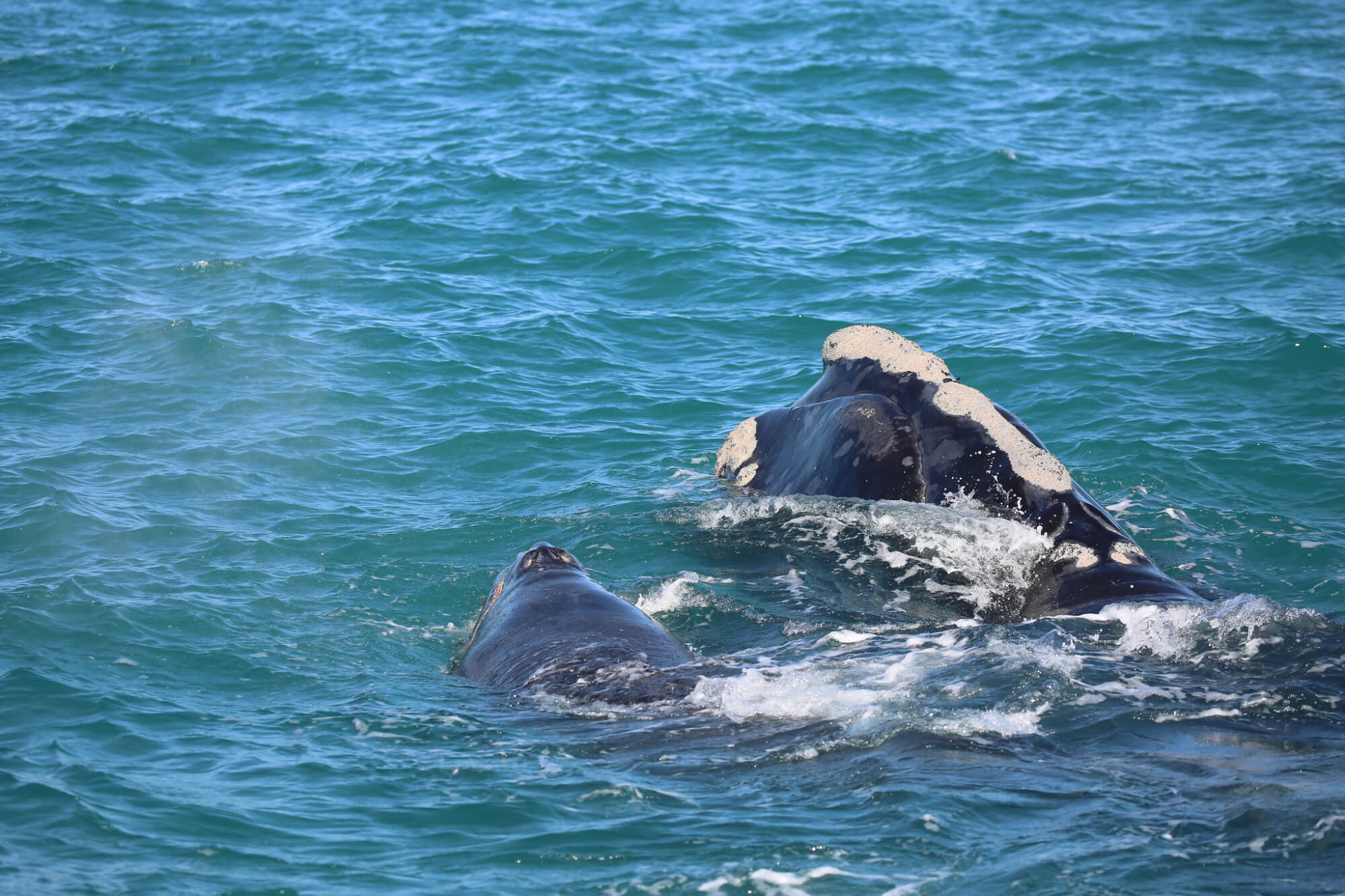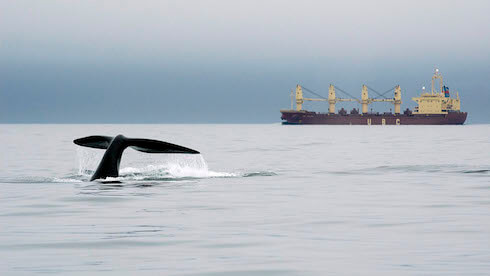After being hunted for hundreds of years, the North Atlantic right whale currently faces a number of threats, including entanglements in fishing gear, ship strikes, and the adverse effects of climate change. These largely anthropogenic pressures are dangerously undermining the survival of this endangered species, whose population has fallen below 370 individuals.
With their stocky build, lethargic surface movements and slow swimming, right whales were particularly vulnerable to hunting, which led to their decline over the centuries. Also known as bone whales or Biscay whales, they frequent the coastal waters of eastern Canada and the United States. In 2017, the discovery of 18 carcasses in the North Atlantic was an alarming one for the scientific community. Having historically frequented the Bay of Fundy, some right whales had migrated to the Gulf of St. Lawrence, where an unprecedented mortality event occurred. Since then, births have been unable to offset mortalities, which continue to add up.
In light of this critical situation, research efforts have intensified, actions have been taken to support the species, and specific protective measures have been implemented. The precarious balance between human activities and cetacean conservation is a formidable challenge, especially as the window of opportunity for the survival of right whales is closing.
Throughout 2025, follow the latest right whale news on this page.
Read about the key events of 2017, 2018, 2019, 2020, 2021, 2022, 2023 and 2024 in our archives.
2025 NEWS
Although they are expected to live for more than 100 years, North Atlantic right whales don’t reach an average age of more than 22, reports La Presse. Climate change, ship strikes and entanglement in fishing gear are all being blamed. Whaling has also exacerbated the problem, in particular by eliminating virtually all older whales, those that pass on the knowledge to younger individuals.
There are now five North Atlantic right whale births this season! The Caterpillar and Blackheart females were spotted with their respective calves off the Florida coast, explains Science et vie. While this is Caterpillar’s first calf, it is Blackheart’s second, her last having been born 12 years ago. The gap between two births increases over the years, rekindling concerns about the conservation of this endangered species.
Thanks to drones, scientists can now capture thermal images of North Atlantic right whales to study them, without disturbing them, reports Radio-Canada. University of New Brunswick researcher Gina Lonati’s doctoral project developed this technology, which enables the temperature of whales to be taken through their blowholes, when they come to the surface to breathe.
Check Mark (#3705) and Grand Teton (#1145), two female North Atlantic right whales, recently gave birth in Florida waters, according to the New England Aquarium. This is Check Mark’s first calf, and Grand Teton’s ninth! The current tally for the 2024-2025 right whale calving season is seven calves.
Funding has been granted to Saint Mary’s University, Halifax, to update a North Atlantic right whale DNA database, announces Radio-Canada. With a DNA sample, scientists are able to identify an animal and trace its family tree, among other things. To date, the DNA of nearly 700 individuals can be found in the database.
The U.S. National Oceanic and Atmospheric Administration (NOAA) is under attack from the Trump administration. An article in Le Devoir reports budget cuts, a 50% reduction in staff and a halt to international communications. Among other things, the restrictions could have an impact on cooperation between Canada and the United States to protect North Atlantic right whales.
Counting North Atlantic right whales using microphones and machine learning? That’s the idea behind a recent study by scientists at Cornell University, a cheaper and safer way to study this endangered species. To this end, the research team has developed a model capable of detecting right whale sounds up to 86% from audio recordings, reports Phys.org.
Donald Trump’s environmental policies have experts worried about Eastern marine life, reports Radio-Canada. Among other things, the cancellation or modification of protection measures could threaten the survival of the North Atlantic right whale, an endangered species whose habitat is located in both Canada and the United States.
A calf and its mother North Atlantic right whale were spotted in Cape Cod waters last week, reports Cape Cod Times. The Center for Coastal Studies confirms that this is Nauset (#2413), a 31-year-old female, accompanied by her fifth calf. The pair had been spotted earlier this winter in Georgia. Nauset and her calf join nine other mother-calf pairs observed since the start of this birthing season, bringing the total to 10.
The North Atlantic right whale birthing season has come to an end, but the goal of recovery has still not been reached, explains Robert Michaud, President and Scientific Director of the Group for Research and Education on Marine Mammals (GREMM), in an interview with Radio-Canada. The reproductive success of female right whales has been declining in recent years due to entanglements and collisions, which require a great deal of energy for individuals to survive.
Changes and additions to North Atlantic right whale protection imposed by the Department of Fisheries and Oceans have been greeted with relief by Prince Edward Island lobster fishermen. Due to the short lobster season, restrictions to protect the right whale sometimes meant that fishermen had to close their areas and take out their cages for 15 days at a time. The CBC News article also looks at a pilot project to manufacture safe gear to prevent right whale entanglement.
“This is a game-changer for conservation efforts,” writes the Cape Cod Times. Two buoys have been installed in Cape Cod Bay, a hotspot for North Atlantic right whales, and off Cape Ann, an area they pass through on their way to their summering grounds in the Gulf of St. Lawrence. These devices can detect right whales at a distance of around five miles when there are no ships in the vicinity. There are now 11 of these instruments along the coast as far as Florida. Curious to know where they are? Click here to find out more!
Summary of mortalities
North Atlantic right whales are currently experiencing an “exceptional mortality event.” Indeed, since 2017, annual mortality rates have been particularly high and represent a real danger for the survival of this fragile and vulnerable species. This is why births, deaths and accidents involving these whales are being closely monitored in Canadian and US waters.
Births
During the winter of 2024-2025, North Atlantic right whales experienced an average birthing season with eleven calves. For this species, every birth is cause for celebration. This population now numbers fewer than 70 females of reproductive age. Females reach sexual maturity around the age of 10. They give birth after a 12-month gestation period and have a calf every three years, though the interval between births is growing increasingly longer due to issues faced by the species such as entanglements and collision-related injuries.
Whales Online articles:
Speed reductions are having a positive effect on right whale mortality.
Entanglements are a major issue for right whale reproduction. They seriously compromise the animals’ health and reduce the energy they have available for gestation and lactation.
Does the increased presence of right whales in the St. Lawrence mean the cetacean is returning to its historic range? Read a brief history of right whale hunting in the St. Lawrence.
Since 2015, North Atlantic right whales have been making a marked return in the Gulf of St. Lawrence, a place they have not frequented in numbers in over a century. This return appears to be linked to changes in their prey distribution. It also raises questions about the evolution of the species’ habitat and the impacts of human activities on its migratory behaviour.
The endangered North Atlantic right whale is a source of both fascination and concern. To better understand the factors that threaten this species’ survival, a number of scientists have focused on certain lesser-known aspects of its behaviour. Here are five new discoveries concerning right whales that were made in 2022.
The return of right whales to the St. Lawrence appears to be linked to changes in the distribution of their prey, particularly the copepod Calanus finmarchicus, which is now more abundant in these waters.
Links and resources
Further reading on the species:
North Atlantic right whale factsheet
Recognize individuals and discover their life stories:
North Atlantic right whale photo-identification catalogue
Where are the right whales right now?
Interactive North Atlantic right whale sightings map: WhaleMap and
Surveillance and prevention in Canada:
Discover the right whale monitoring and surveillance activities in Canada being carried out by Fisheries and Oceans Canada
Understand the 2021 fishery management measures aimed at protecting right whales implemented by Fisheries and Oceans Canada
Discover the collision prevention measures implemented by Transport Canada
Social media:
New England Aquarium Right Whale Research Program (Facebook)
Center for coastal studies (Facebook)
Other resources:
Summary of the 2017-2025 North Atlantic Right Whale Unusual Mortality Event by NOAA Fisheries
View the details of the 2025 calving season compiled by NOAA Fisheries
North Atlantic Right Whale Consortium (NARWC) – Annual Report Card
2020 Annual Report by Anderson Cabot, Center for Ocean Life
Reports and documentaries:
Entangled (2020) – Film by David Abel and Andy Laub
Les baleines noires (2017) – Documentary on TOU.TV (Découverte series, in French)
Deep Trouble (2017) – 6-episode podcast produced by CBC
Les dernières baleines noires (2023) – Film by Nadine Pequeneza on TOU.TV (in French)





